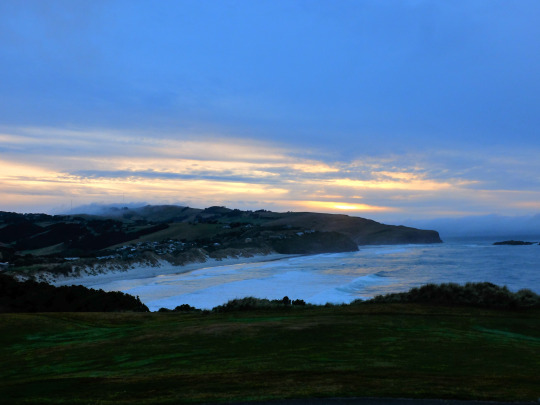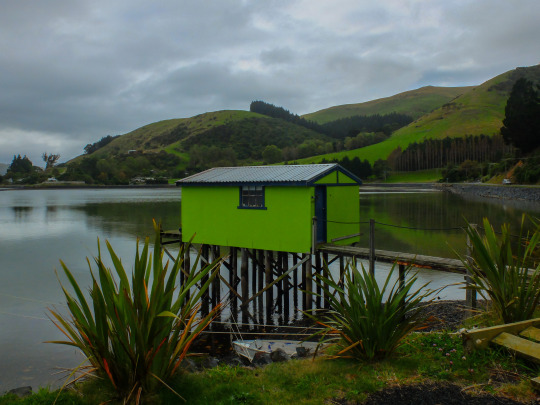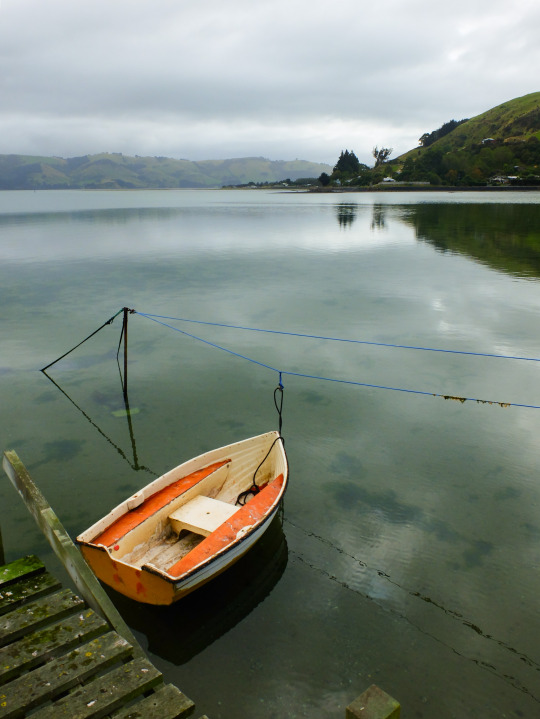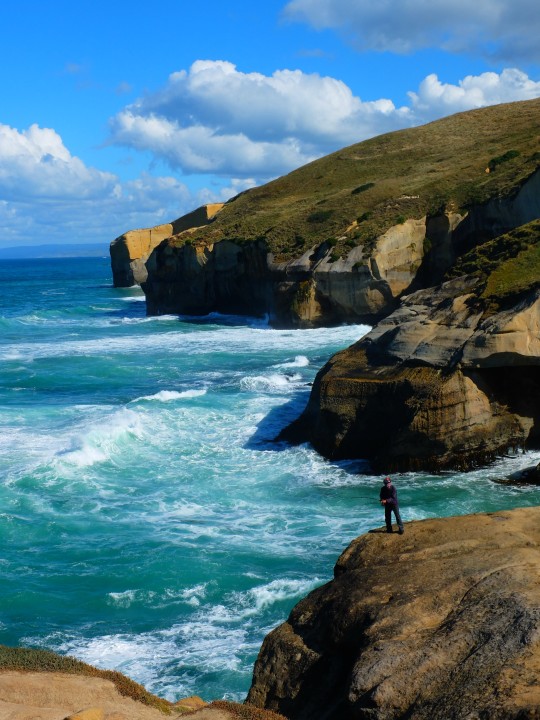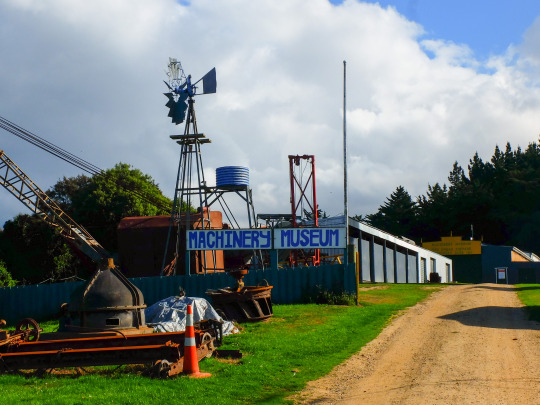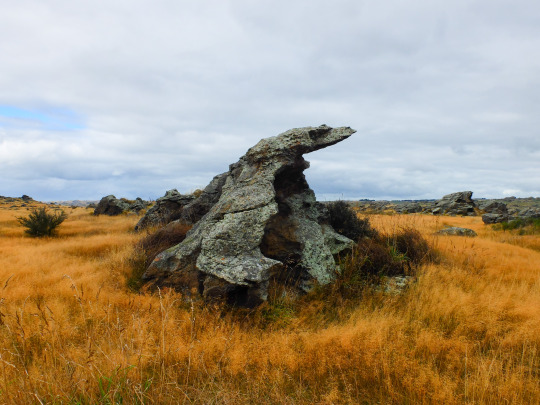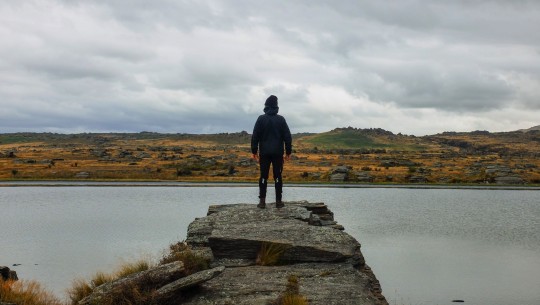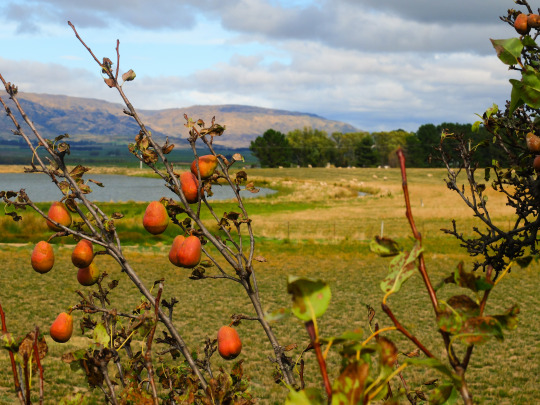#Te Wai Pounamu
Explore tagged Tumblr posts
Text
We’re having a hāngī to celebrate Matariki tomorrow and I’m thinking of silly things that could happen.
104 notes
·
View notes
Text
Winston Peters is a perfect example of how capitalist power structures incentivise people to destroy social movements that help your community purely because it benefits you monetarily. He’s a racist, money grubbing, egotistical bastard who drums up anti-Māori and anti-POC sentiment to get support from racist old rich people.
The push for more te reo Māori being more a part of public life is the culmination of decades of protests, marches, and sacrifice made by countless people. All that is being erased because a government got into power on the back of importing racist and anti-progressive American rhetoric and culture war bullshit to this country, all because it makes them money, and pushes their conservative agenda to strip non cis white men of their rights.
I’m a teacher, and the National/NZ First coalition document specified the banning of sexuality, gender, and relationship-based education. It’s an assault on all minorities in this country.
god I'm so fucking furious at the removal of Te Reo Māori names from organisations around Aotearoa. it's a complete non-issue, every organisation has the English name directly underneath the Māori name. I have never once as an English speaker been unable to understand what an organisation is for. Winston Peters, the Deputy Prime Minister, who is literally Māori himself, said “Te Papa is a historic name but tell me this waka kotahi, how many boats have you seen going down the road?”. Waka does not just mean canoe. it means vessel, and waka kotahi (the transport agency of Aotearoa) explains this VERY SIMPLY on their official website. waka kotahi means to travel together as one. Can you see how fucking upsetting this is. A Māori person in power who is in agreement about banning his own language, being so cocky about something that he does not even understand due to the suppression of the language of his people. It makes me sick. I've seen reports from Māori people all over Aotearoa speaking out about how upset and furious they are, how decades of progress have been undone in the fight to restore the rights of their people who have for so long been oppressed and have suffered the effects of colonisation. Please share this if you can, I hate knowing how few people will hear about this, I know there is so much injustice in the world right now and it is so exhausting, I know. I love you all, keep it up.
https://waateanews.com/2023/11/27/te-reo-public-service/
11K notes
·
View notes
Text
Tipua: the wrath of Ngārara...
...has just hours to go and is around $1000 NZ/$600 USD from its funding goal!
Support indigenous TTRPG design and get access to a cool spin on the Fate system in the process. The game and its setting are steeped in tikanga and te ao Māori: Tipua is set on the distant planet of Karito—a vast, labyrinthine world where tangled rivers wind through swampy wetlands, shadowy forests, ancient pā (fortification sites), and the mysterious portals known as Ngā Pūmotomoto. For those of you who have experienced the wonders of Aotearoa and Te Wai Pounamu, you will see some obvious similarities.
It's so affordable too. $20 NZ (about 12 USD) nabs you the digital rulebook and printable custom Fate tokens, as well as a social media shout out and access to the backers discord.
If nothing else: please have a read of the Kickstarter and share this post around! Not long to go and it would amazing if this awesome Māori-led team could reach their funding goal.
#fate rpg#fate core#Māori#Aotearoa#indigenous ttrpg#indigenous design#tipua#the wrath of ngārara#indie ttrpg#kickstarter#tabletop#ttrpg#fate dice#game design#rules light rpg
100 notes
·
View notes
Text

_thespiritgarden_
Kia ora friends and family 💜
Just arrived back at home after a week or so of sinking my roots deep into the beautiful Te Wai Pounamu 💚
For those of you that don't know "Te Wai Pounamu" means "the green waters" and is the native name of the south island of Aotearoa.
This waterfall is fed by a great glacier deep in the heart of the fiordlands. Sinking our bare bodies into this wonderful creation was a true honour to behold 💜
The great valleys of these fiords were once carved out by ancient glaciers that now connect to the sea; the power of water forever astounds and inspires me.
Foraged some ingredients along the journey to share with you all💜 Hit me up for some custom blends of the great Te Wai Pounamu 💚

20 notes
·
View notes
Text

Meet The Writing Team
Hello Kinfolks! These last two months have been quiet for y'all in terms of updates, but BUSY in terms of the work being done by the sept of contributors to this project!
At the start of October I put out the call for help, saying that this project cannot succeed without the help and support of the Werewolf fandom. I'm happy to report that you as a fandom have responded phenomenally, and production on this series is now underway! These last few months have been dedicated to recruiting team members, and researching our book framework. We've about filled in the main core of the team, but are always looking for more help.
October through November has been dedicated entirely to research, both putting together a collection of citations we'll be using in this first book, and passing out initial writing assignments. This list is sure to grow in time, but for now we have plenty of work to do!
With that all said, I'd like to introduce you to the team that are showcasing the Gaians. Look under the cut to meet them!
Amy Waller (she/her)
Bluesky Page
Ms. Waller is a freelance writer and massage therapist based in not-quite Northern Virginia, and is a contributor to D.W.A.R.V.S. . Werewolf the Apocalypse was her first RPG, and she loves the themes of shapechanging as self-actualization and of trying to balance instinct and wisdom.
Amy has joined the team to depict the journals of Cryptobiologist Esme "Leaping Ghost".
Bek Andrew Evans (He/They)
Linktree Page
Mx. Evans is a freelance writer and illustrator from Jackson, Mississippi. He explores themes of mental illness, disability, abuse, poverty, queer themes and the intersection of these statuses. He uses body and psychological horror, meticulous attention to medical details, and deep character dives as some of his favorite methods to achieve those goals.
Bek has been indispensible in book research, and will be taking his experience with M20 Sorcerer and writing for the Hearthbound, and fictitious news article citations.
Excelgarou (She/Her)
Carrd Page
She's been described as a Werewolf: The Apocalypse academic, and wears this title proudly. She labors at all hours on resources for Werewolf fans - particularly as regards aggregating otherwise obscure information - such as the Build-a-Veteran tool or (especially) the Werewolf Index Project.
Excelgarou is our lead researcher, ensuring our book citations and narrative voices remain consistent through all editions. She has also been conscripted to write the introductory passage on the World of Darkness, and to redraft the Children of Gaia.
James "Jim" E. Deeley (He/Him)
Linktree Page
Jim has been playing, running, and writing for tabletop roleplaying games since he was first introduced to them over twenty years ago. Jim has presented on the subject of writing for games since 2010, and has been contracted to write mechanics and to do character design by the likes of High Level Games, Lostlorn Games, and Renegade Game Studios, but is equally skilled at writing lore and narrative, skills honed over two decades of running roleplaying games and medieval studies, lending a deep historical context to his writings.
Jim will write the Western Concordat, showcasing the Silver Fangs, Fianna, Get of Fenris, and Glass Walkers.
Mórag (it/its)
Mòrag is a writer and botanist from Te Wai Pounamu. It writes both botanical articles and horror stories, the former to raise awareness of ecological issues and the latter to explore what it means to be human, represent trans and autistic experiences, and addiction. It's horror writing is best recognized for its use of visceral first-person perspectives, body horror, and the grotesque. It is influenced heavily by works such as the Hellraiser films and the philosophies of Georges Bataille.
It has joined our team to write the story portions of the Song of Trillium, showcasing the legend of Tawatuy.
#world of darkness#werewolf: the apocalypse#werewolf the apocalypse#werewolves#world building#werewolf#indie ttrpg#storytellers vault#wta#stv#w5#Diablos Minions grow stronger
58 notes
·
View notes
Text
Character Profile — New Zealand
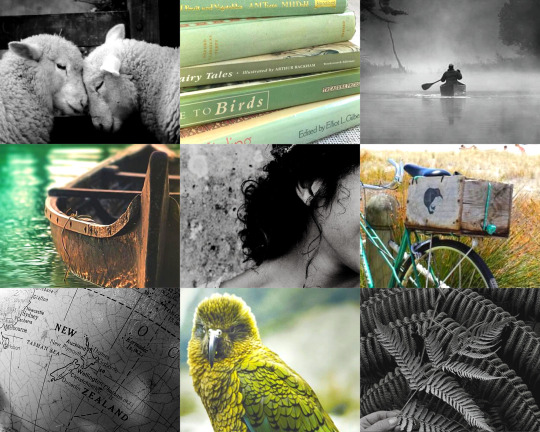
Character Name: Aotearoa, New Zealand. Zee, Kiwibird, Kiwifruit, Dearest Eleanor, Darling Eleanor. 1810 - 1967 - Eleanor Elizabeth Rose Kirkland 1967 - ???? - Aroha Eleanor Kaipo.
Age: Baby, toddler, child. 1800-1867. Preteen 1867-1880. Teenager, 1880-1900. Appears about 18-21 after 1907. Before then, about 2-3 years younger than Jack.
Height: 165 cm, 5'5.
Physical Description: Always round-faced and chunky as a baby, Zee grew to be a very athletic young woman who dove into sports from the first time she held a ball and shed corsets the first chance she got. She has the ideal body for rugby, wide-hipped with a low center of gravity. It takes much exertion, but she's got enough human strength to haul one of her gigantic brothers. She spent her early adulthood in corsets and was stuck in a strict gender binary, so she has a lot more grace and poise than the grubby flanno shirt and gum boots would betray when she's in the paddocks these days. She can appear very cranky and cold; her default expression is sour, but when she smiles, she lights the room up.
Eye colour: Dark brown eyes that look slightly green or gold when she's wearing a larger Pounamu/greenstone pendant but are unconditionally brown.
Hair colour/style: She has an incredible amount of dark curly hair that she generally wore long until 1915 and has worn in various styles since then, generally around her shoulders after 1930. She didn't have to use rollers when those were fashionable; she could form her hair into stylish rolls and waves. She's worn it somewhat longer in the new millennium and experimented with various braids and styles, especially reviving Māori knot and twist styles. Still, a long braid over one shoulder often feels most familiar.
Other distinguishing physical traits: Her hair tends to be one of her trademarks, but she inherited her father's brows and freckles, which got her caught by Arthur when she was in uniform as a male.
Personal Appearance/Style: She loves black clothing way too much. She always preferred being in mourning clothes before 1900 so that people would leave her the fuck alone in public. She wore a lot of Jack's clothes growing up. She likes fashion and keeps an eye on new styles, and she wears green a lot, generally a darker jewel-tone green for more formal occasions overseas. At home, it's a lot of bare feet, cargo shorts, t-shirts and water sports. She has worn the Korowai for formal occasions since the mid-20th century. She's had the Tā moko done several times, but she's a nation, so it fades, and she has to get it redone.
Verbal Style: Due to sex and ethnicity, Zee learned to switch much more easily between accents and languages to whatever will give her the most advantage in a situation. She can code-switch between te reo Māori, her default broad New Zealand accent and a relatively posh accent that doesn't quite ring upper-class British after WW2 but certainly reflects her education and commonwealth status.
Level of Education: Of Arthur's children, she has the most history of formal education. She received an educational equivalent of a BA in the 1890s at Oxford before women could actually receive a diploma; her graduation present was her right to vote in 1893. She attended Florence Nightingales Nursing College in London and graduated in 1906, her graduation present being her and Arthur signing her law of formal dominionship into law. She went back to Oxford after WW1 to get a degree in Social work and Anthropology in 1924, and finally went to medical school in the 1930s and qualified as a surgeon by 1934. In 1939, anticipating the coming war, she trained as a pilot specializing in navigation. It was only in the 1950s that she finally enrolled in engineering courses but ended up in a graduate program for Ornithology (study of birds) after the 1953 Wildlife Act.
Occupation: She has some work she does for the government, but generally, she rotates between social work, conservation work with her birds and some diplomacy work.
Past Occupations: Military nurse, sapper, subaltern, social worker, archaeologist, anthropologist, flight nurse, surgeon, GP sheep rancher, agricultural and mechanical engineer, flight navigator, pilot, diplomat and conservationist.
Skills Abilities or Talents: As far as special nation abilities go, as a Polynesian seagoing culture, she almost always knows exactly where she is no matter what hemisphere, just automatically. She's never gotten lost in her life. Also, when she's angry, her islands tend to show slightly more volcanic activity than usual, primarily geysers. She's second only to Alfred in sheer natural prowess at practically anything she wants to try. Has very little aptitude for the creative arts, however.
Admirable Personality Traits: Tenacious, observant, intelligent, compassionate, logical and resourceful.
Negative Personality Traits: Judgemental, self-righteous, and often too logical and sharp-tongued.
Sense of Humor: Sharp, ironic, sarcastic, a bit twisted and darker than it should be.
Physical/Mental illness or affliction: Generally the most stable of her siblings, sex and national rep status sometimes combine in really weird ways, and her moods and hormones tend to fluctuate in such a way that even Jack, someone who regularly handles the world's deadliest predators and poisonous creatures might hesitate and will not attempt it unless armed with food, chocolate and much compassion because good god does she deal with so much shit as a woman and a country.
Hobbies/Interests: Bungee jumping, zorbing, bird watching, surfing, mountain climbing, sailing, gardening, ziplining, reading and rugby.
Favourite Foods: Fish and chips, pavlova, hāngī.
Most important personal item: Her collection of Taonga Māori, mostly her Pounamu/greenstone pendants, but also carvings she has in her home, combs, her Korowai and kākahu cloaks and a Wahaika she's had her entire life.
Person/friend close to character: Her next oldest brother, Jack, is her best friend and closest family member and the person she probably loves most in the world, if often to her own chagrin. Also, close to Taiwan. Has an evolving, often unequal but also close relationship with other Pacific and Polynesian nations due to her status as an imperial power in the region.
Brief family history: Born in the very early 19th century, Arthur claimed her and took permanent possession after 1840. In the structure Arthur raised her in, she was the last child and only daughter, has 3 elder brothers, her father, 2 uncles and an aunt. Her situation is much more unclear than her 'siblings' because she has always had Māori looks and kept their traditions and culture close to her heart. And she's not sure how that relates her to other Polynesian cultures because she was born of fucked up structures, and that made her incredibly different than many of her island peers. Her father sees much of his mother, a pre-Roman figure in her, but that always annoys her a bit.
Most painful experiences in the character’s past: Chunuk Bair, the Sinking of the HMS Marquette, Passchendaele, the mount Erebus disaster in 1979, where she was killed on her way to Antarctica and earthquakes in 1931, and the Spanish Flu in 1918.
Their Song: Birds, by Imagine Dragons & Elisa
#Character Sheets || bodies and flesh of borders and fences#zee || ahakoa he iti he pounamu#hws new zealand
36 notes
·
View notes
Text
Team Assistant, Learning Support
Job DescriptionTeam Assistant, Learning Support Permanent – Starting in January/February 2025 Full time (40 hours per week) Based in Auckland Ko wai mātou | About UsTe Aho o Te Kura Pounamu (Te Kura) is New Zealand’s largest school with a roll of up to 24,000 ākonga (students) at any point of time. We provide personalised learning programmes from early childhood to NCEA Level 3.Our ākonga are…
0 notes
Text
Goldfish Bowl
Text commissioned for the inaugural exhibition at Wave Project Space, Ōtepoti Dunedin:
instagram
Listen to “So Tough” by The Slits. Make a cup of weak tea just to keep your hands warm and look out the only window in the living room. Doesn’t get much sun in April. Less in May, this side of the valley. You try not to check your notifications. You try to sit still. It’s not easy.
James Varga’s pictures form a haphazard diary to the last eighteen months. Starting with a return to their childhood pencil copies of cartoons, Varga began drawing again. It was a way to record the important parts of their world, or process the emotional soup through which we each wade. Rather than making pictures to “say something,” painting became a practice of picturing the world Varga needed to see. Similarly, they use their mother’s surname to claim that part of themselves.
The difference between a diary and an autobiography is the audience. “What should my reader know?” “Does anyone ever need to see this?”
Listen to “Identity” by X-ray Spex. There is a picture of Varga’s legs stretching out to a sunburnt Alexandra backyard. Dead washing machine and semi-rural ¼ acre dream detritus. There is a picture of chopped fish and fish heads. If you know, you know. Being Tauiwi or Tangata Tiriti in Te Wai Pounamu can be full of placelessness; being anywhere at all down here can feel like the wrong place to be. Sometimes, we blame ourselves. Varga’s POV pictures evoke this feeling of waiting around for something to make sense. But pictures like that of the dish of fish heads have a different effect; like the sour umami of a fish head soup on a table of boiled hams and carrots; finding what you were looking for.
Listen to “Pay to Cum” by Bad Brains. Varga adds a generous cock to a pencil drawing of one of their friends. For a laugh? Or because it needed to be said? In my brief conversation with Varga, it’s clear they are trying to cut through the absurd violence of masculine performance. There is a CD case for John Rowles’ “HITS collection” on the floor in the photo Kari sends me. It’s beside a painting of a milk bottle and some pencil sketches of muscled butts.
Pay to write, pay to play
Pay to cum, pay to fight
Listen to “Product of My Environment” by Circle Jerks. There is a picture of a scrotum driving a tank. Like anyone, Varga’s mind wanders. Even when resisting the internet as subject matter or medium, the testicular posturing and violence of the recent invasion of Ukraine brought these globally televised politics into Varga’s pictures. Whether the picture is literal and figurative, or abstracted, comical, and political, Varga’s work seems to always be an act of processing, never solved.
On Zoom, Varga and I talk about displaying the pictures like a “salon hang,” recalling the Salon exhibitions of the Academie des Beaux Arts in Paris where all the paintings accepted to the institution’s annual exhibition were crammed onto the walls. There’s an irony here for Varga as a self-taught artist. This antiquated mode of display can function in the opposite way to exclusive salons; more like an over-stimulating information soup, or endless Tiktok Trending page.
The high and the low are artificially separated in much of daily life. Instead, just as the punk poets Viv Albertine or Poly Styrene did, we are all cataloguing the boring, normal, enraging, hopeless, loving, small, vital, and forgettable moments of life in our own ways. Varga will keep going whether you’re looking or not. It’s one way of pushing through the clouds.
0 notes
Text
Actually deranged behaviour. This guy is supposedly the minister for arts, culture, and heritage, but I guess National is really going mask off on how the only heritage they care about is white coloniser heritage. It also makes this twat look so nonsensical just on its face.
No one can seriously say that National doesn't have an anti-Māori bias at this point and not be lying through their teeth.
#aotearoa politics#new zealand politics#aotearoa#aotearoa me te wai pounamu#new zealand#te reo māori#Māori language
196 notes
·
View notes
Text
Te wai pounamu or many just otautahi and surrounds ass post but I just saw an ad for rangi ruru school above a text post and got excited to see someone dunk on rangi ruru. That's. Not what that post was.
#i know very little about rangi ruru except that rich people go there#and rich people from that area are insufferable
0 notes
Text



27.12
As a located, embodied western thinker-creator-researcher
Collecting stones as crumbs or holograms of the earth and biosphere - metaphor for solid knowledge
Designing digital 'objects' as animate beings - the 'spirit' in these systems, machines and a experiences as well as in the hardware and materials used to drive and power them
Designing as bringing forth, becoming - best example of enactivism in practical terms
Documentary narrative as living storylines and songlines?
Finished Māori Philosophy. Annotation: Annotation #3: Stewart, G. (2020). Maori philosophy: Indigenous thinking from Aotearoa. Bloomsbury Publishing.
This introductory reader to indigenous Māori thinking, culture and worldviews is a 2020 short volume written by professor of Māori philosophy of education from Te Ara Poutama at AUT, Georgina Tuari Stewart. As a part of the Bloomsbury Introduction to World Philosophies series, the text is by no means extensive or exhaustive, but clearly outlines and neatly summarises some core aspects of contemporary Māori thinking with great personal, historical, and narrative examples illuminating and developing the concepts further. Stewart highlights the contemporary post-colonial context in which Te Ao Māori exists in Aotearoa New Zealand, and how this context and incommensurability between Māori and Pākeha worlds and thinking, frames a Māori philosophy informed by critical theory (?). The book makes explicit reference to the contradictions of a ‘Māori’ philosophy, especially given the historical fact that ‘Māori’ as a unified people only stemmed out of the post-colonial context of needing to unify in response to the arrival of Pākeha. Before the colonisation of Aotearoa, although sharing lineage from the first waka from the Pacific and overarching worldviews, Māori identified more with whakapapa, hapu and specific iwi connections. Stewart details an understanding of ‘Māori’ as a form of indigenous thinking and identity born out of a colonial context in order to strengthen the culture and survive (?). The text also makes a point that Māori worldviews and thinking is a living culture, originating in oral traditions, which makes a book written for general audiences in English, and using western paradigms and modes of analytical thought, a contradictory and ironic position. In addition to this post-colonial context, the author outlines the traditional holistic Māori cosmological vision, stemming from an animistic, interconnected view of humans and natural environments centred from the concept of ‘whakapapa’ (limitedly translated to ‘genealogy’ in English), as well as the more contemporary thinking of Kaupapa Māori research methods.
The text is written in a combination of theoretical, academic language in some sections, narrative and anecdotal in others, as well as framed within traditional Māori storytelling and explanatory approaches (?).
The relevance of this book to my practice is primarily in giving myself a more solid understanding of a non-dualist, holistic worldview from the global south - especially given that this worldview is from where I currently stand and have been born. It details a living example of a culture and philosophy which sits outside of the reductionist, and dualist western tradition, and one in which the world, people, animals, plants and other materials are viewed in an interconnected and mutually dependent way.


Christmas gift from Mim. Fish hook pounamu representing te Matau a Maui - Maui's fish hook - Hawkes bay, a reminder of this place, and a good luck charm, which I'll take forward on to the next challenge. Thinking about the aura of the Carver imbued into this piece and the pounamus aura as a material from the natural world and the 'experiences' this stone has been through.
0 notes
Text
I hate to be That Guy, but I feel I must mention that a lot of Māori down my end of the country (south end of Te Wai Pounamu) reject the name Aotearoa; they say it's a northern Māori name that strictly refers only to Te Ika ā Māui.
international people start calling our country aotearoa instead of new zealand challenge
96K notes
·
View notes
Photo

.
.
.
Pounamu
plays a very important role in Māori culture
and is a taonga · treasure ·
.
.
. .
.
pounamu taonga increase in mana · spiritual power or prestige ·
.
pounamu is found only in the south island of new zealand
known in Māori as
Te Wai Pounamu
· the [land of] Greenstone Water ·
or
Te Wahi Pounamu
· the place of greenstone ·
.
me tautau pounamu · kia kore ai e pakaru · ake · ake
. .
let conclude a peace treaty that may never be broken · for ever and ever ·
.
.
. .
.
.
.
0 notes
Text


Somewhere between Springfield/Tawera/Kowai river and Arthur’s pass
21 notes
·
View notes
Text
Once again, I must mention that many Māori people living in the south of Te Wai Pounamu do not use the word "Aotearoa" for the country as a whole; they say it's a northern name that doesn't apply down here. I've heard the wider use attributed to colonization.
For clarity: I'm not Māori myself and I don't get to say who's right or wrong. I'm writing this to warn people who might otherwise do this unawares that if you say "Aotearoa" down here the response might be less welcoming than you anticipated.
(for clarification, aotearoa is the original māori name for new zealand and is used widely across the country. nz is also often referred to as "aotearoa new zealand" instead of one or the other!!!)
please reblog because I'm kiwi and I need this to get to people who don't follow me directly for less biased results!!!
15K notes
·
View notes

